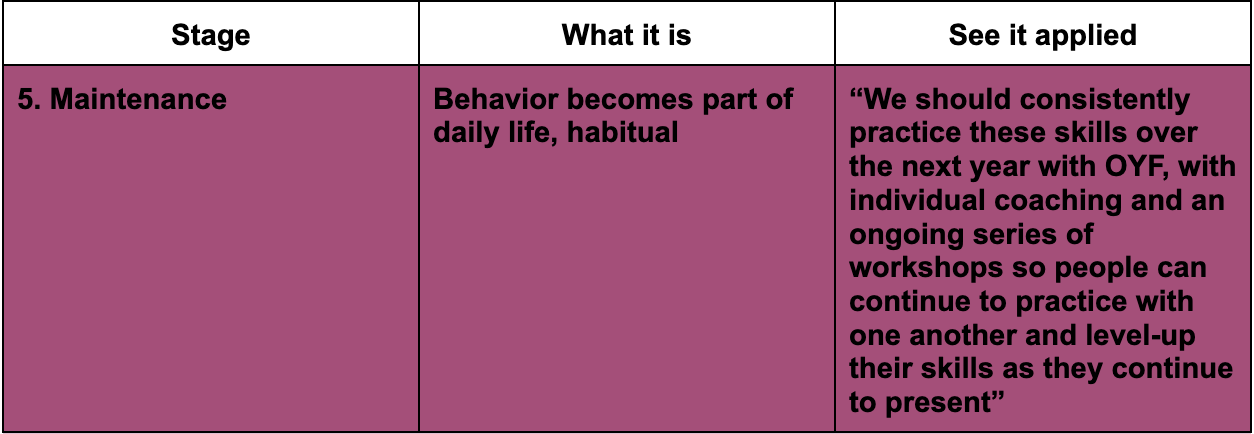Lasting Behavior Change Requires Practice, Practice, Practice
By Gabri Chodosh, Corporate Strategist
Something as simple as drinking an extra cup of water a day can take an average of two months to become a consistent, habitual behavior. Changing behavior is hard, not surprisingly, because it requires you to disrupt old habits and create new ones.
We help our clients all the time with behavior change, including how to become better communicators. As people return to the office, or toggle between Zoom meetings and in-person presentations to hundreds of people, this need seems even more acute.
Recently, we’ve gotten a lot of demand for presentation skills engagements. We typically do a single full-day workshop and it’s always an amazing experience! Participants leave excited to take on the challenge of adopting the new skills we have taught them during our 8-hour session together. We leave feeling inspired and excited that we’ve made a positive impact.
A client recently asked us how to ensure these successful one-off workshops have lasting impact. Based on this question, and in the spirit of continuous improvement, we asked ourselves: “Is there a better way to structure our trainings to encourage lasting behavior change?”
We did some research. Here’s what we learned:
Be aware of the six stages of change.
The “Transtheoretical or Stages of Change Model” was originally based on research about smokers trying to quit. It took smokers several attempts to quit smoking and throughout this process they cycled through six stages of change. Further research indicated that almost anyone engaging in a behavior change will cycle through these stages.
Let’s look at the first four stages of change, framed within the context of presenting skills:
This table was adapted from a blog post https://accelerate.uofuhealth.utah.edu/resilience/why-is-behavior-change-so-hard
We’ll pause here, since most companies don’t move beyond step 4 when it comes to their behavior change journey. So, what’s needed to make lasting change? Ongoing engagement, or stage 5:
We think maintenance, the 5th step, is the step most companies miss when working with us to drive behavior change within their teams and create a lasting impact. Whenever you’re trying to help an organization, team, or individual learn a new skill/habit, make sure to identify your “maintenance plan” so that the skill/habit becomes part of daily life.
So that’s it! Thanks for reading……BUT WAIT, there’s more.
Let’s talk about the last stage in the “six stages of change” model:
Surprise! People often return to old habits. Knowing that relapse is inevitable, it helps to have an approach to manage it. We suggest that providing ongoing resources to reinforce new habits, or a “maintenance plan” as described earlier, can help with this.
So let’s go back to our original question, “Is there a better way to encourage lasting behavior change?”
The answer is “Yes.”
The next time your organization is pursuing a professional development goal, such as “getting better at presenting,” we advocate that you ask yourself if there’s a “maintenance plan” in place to encourage lasting change.
If your organization or team doesn’t have a maintenance plan for your learning and development goals, ask your consultants (like us!) to help design and implement one for you. At the very least, contact us and we’ll suggest ways you can do this on your own once the workshop wraps up!
OK, I’m going to go drink my extra glass of water now.






